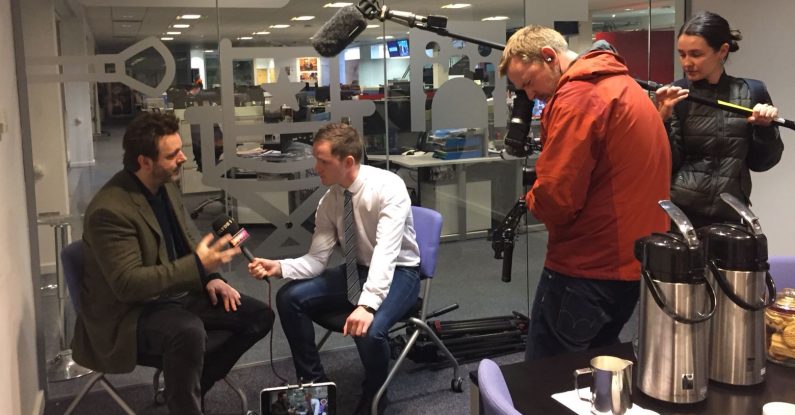
You’d like to tell more people about your business or pet project.
But you’re hopeless with social media and online marketing.
Help is at hand.
Newspapers, radio and TV exist to tell stories.
And it could be yours.
Read on.
Let’s explode a myth straight away.
The media does cover good news stories.
Our company benefited from great coverage when we helped Glasgow win the right to stage the 2014 Commonwealth Games.
Because I told our story to any journalist who would listen.
The truth is that too many people are afraid to engage the media.
In case it goes wrong.
But newspapers, radio and TV welcome approaches from people who have a story they want to share.
It only has to be interesting and relevant to their audience for them to cover it.
So how do we engage with the media?
How do we work with the media to gain the coverage we want?
Here are five steps to help you get the right results.
When I worked on local papers, people dropped in every day to tell their story.
Of a new business venture.
A fast-approaching charity event.
Or to say why the council needed to rehouse them.
And we considered every approach before deciding what to cover.
But it takes us to approach the media to suggest the story.
So phone the news desk.
Follow up with a simple email.
And be clear on what your story is.
If you’re a typist rather than a caller, here’s how to write your email.
Kris Law aims to join an Arctic expedition next year.
He needs £20,000 to make his dream come true.
But how does he publicise his quest and raise money at the same time?
As a start, he’s planning to pull a large tyre along the West Highland Way.
From Glasgow to the west coast of Scotland.
To raise money and improve fitness.
I’ve advised Kris to phone news desks this summer and tell that story.
So they can get a photographer or news camera to cover the event for newspapers or TV.
Kris asked me:
“Will they be interested?”
I told him:
“Yes, especially before politicians return from holiday to fill our bulletins with Brexit.”
Whether we’re opening a new restaurant or launching a new service, we all have a story to tell.
We just have to paint the picture so a journalist can see our vision.
Here’s more on storytelling.
Everything we say to the media should be positive.
Because being positive inspires people.
While being negative deflates them.
So make sure every word you use on the phone, or write in an email, is positive.
You want positive quotes and headlines rather than negative ones.
Because positives focus on solutions, while negatives focus on problems.
What you say will determine headlines and soundbites.
So keep it positive.
Here’s more on how to do that.
A journalist needs to trust what you say.
So be accurate, truthful and balanced.
Because that makes their job easier.
If you exaggerate, and are found out, trust is broken.
As in any relationship.
As a rule of thumb:
“If in doubt, leave it out.”
You should only say what you know to be true.
Or the story becomes your deception.
Here’s how to make sure your facts are correct first.
What do you want the audience to do when they’ve seen, heard or read your story?
Where can they buy your product?
How can they apply for a job with you?
How much does your service cost?
Or how can they support your fund-raising effort?
Make it clear how they can contact you, or how they can donate.
These details should be in your email, telling your story.
That way the journalist can print or broadcast them.
Here are some different types of ‘call to action’.
Every month, we help clients.
In Glasgow and Edinburgh.
Dublin and Doha.
Manchester and Madrid.
To prepare for dealing with the media.
Because when you engage with the media, your story can travel round the world.
And here’s the good news.
You can do this without a social media account and without intimate knowledge of ‘SEO’ and ‘PPC’.
And finally, it’s free publicity.
So grab it with both hands.
Bill McFarlan is co-Founder and Executive Chairman at Pink Elephant Communications in Glasgow.
You can read his full profile here.
Photos by daniel0685 / CC BY / charlesdyer / CC BY-SA / clasesdeperiodismo / CC BY-SA / US Embassy New Zealand / CC BY-ND on Foter.com.
Rule 2 photo by Kris Law; Work with Experts photo by Vicky Murray.
8th August 2019 Featured in: Blog, Media training blogs By: Pink Elephant
Some media trainers knock you down…and leave you down. Our media coaches show you how to deal with each knock…and still win through. So you have the presentation skills to perform – with confidence.